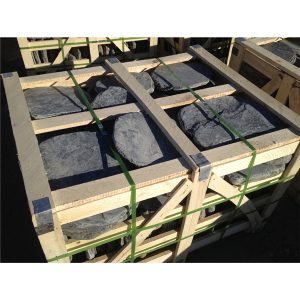Introduction:
In the world of construction and design, the use of stone has always been associated with elegance, durability, and timelessness. However, traditional stone materials can be heavy, expensive, and difficult to work with. This is where lightweight cultured stone comes in as a game-changer in the industry. Lightweight cultured stone combines the beauty and authenticity of natural stone with the practicality and versatility of modern materials. In this comprehensive guide, we will explore the various aspects of lightweight cultured stone, including its composition, benefits, applications, installation methods, and maintenance.

Composition of Lightweight Cultured Stone:
Lightweight cultured stone is made from a mixture of lightweight aggregates, cement, and natural pigments. These materials are carefully blended to create a product that replicates the appearance and texture of natural stone while being significantly lighter in weight. The use of lightweight aggregates such as expanded clay, shale, or pumice helps reduce the overall weight of the stone, making it easier to handle and transport.
Benefits of Lightweight Cultured Stone:
1. Weight Reduction: One of the primary advantages of lightweight cultured stone is its reduced weight compared to natural stone. This makes it easier to transport, handle, and install, resulting in cost savings and increased efficiency during construction.
2. Versatility: Lightweight cultured stone is available in a wide range of colors, shapes, and textures, allowing for endless design possibilities. It can be used for both interior and exterior applications, including walls, facades, fireplaces, and accent features.
3. Cost-Effective: Lightweight cultured stone is typically more affordable than natural stone, making it a cost-effective alternative for those looking to achieve the look of stone without breaking the bank. Additionally, the lightweight nature of the material can lead to lower installation costs.
4. Durability: Despite being lightweight, cultured stone is durable and long-lasting, able to withstand the elements and maintain its appearance over time. It is resistant to fading, cracking, and chipping, making it a low-maintenance option for both residential and commercial projects.
Applications of Lightweight Cultured Stone:
Lightweight cultured stone can be used in a variety of applications, both indoors and outdoors. Some common uses include:
1. Exterior Cladding: Lightweight cultured stone can be used to enhance the exterior facade of buildings, adding texture and visual interest. It can be installed on both residential and commercial structures to create a timeless and elegant look.
2. Interior Walls: Cultured stone can also be used to create accent walls or feature elements within interior spaces. Whether in a living room, kitchen, or bathroom, lightweight cultured stone adds warmth and character to any room.
3. Fireplaces: Cultured stone is a popular choice for fireplace surrounds and mantels, providing a rustic and cozy feel to any living space. The lightweight nature of the material makes it easy to install around fireplaces of all shapes and sizes.
4. Landscaping: Lightweight cultured stone can be used to create beautiful landscaping features such as retaining walls, garden borders, and water features. Its versatility and durability make it a popular choice for outdoor projects.
Installation Methods of Lightweight Cultured Stone:
Installing lightweight cultured stone requires skill and precision to ensure a professional and long-lasting finish. Here are the key steps involved in the installation process:
1. Surface Preparation: The surface where the cultured stone will be installed must be clean, dry, and free of debris. Any existing finishes or coatings should be removed to allow for proper adhesion.
2. Application of Adhesive: A high-quality adhesive or mortar is applied to the back of the cultured stone units using a trowel. The adhesive should be spread evenly to ensure a strong bond between the stone and the substrate.
3. stepstone inc pavers of Stones: The cultured stone units are carefully placed onto the prepared surface, starting from the bottom and working upwards. Spacers may be used to maintain consistent spacing between the stones.
4. Grouting: Once the stones are in place, grout is applied to fill in the gaps between the stones and create a cohesive look. Excess grout should be wiped away before it dries to prevent a messy finish.
5. Sealing: To protect the cultured stone and enhance its longevity, a sealant can be applied to the surface once the installation is complete. This helps prevent staining and moisture penetration, maintaining the beauty of the stone for years to come.
Maintenance of Lightweight Cultured Stone:
To ensure the longevity and beauty of lightweight cultured stone, proper maintenance is essential. Here are some tips for maintaining cultured stone surfaces:
1. Regular Cleaning: Cultured stone surfaces should be cleaned regularly using a mild detergent and water to remove dirt, dust, and grime. Avoid harsh chemicals or abrasive cleaners that can damage the stone finish.
2. Sealing: Depending on the type of cultured stone used, a sealant may need to be reapplied periodically to protect the surface from stains and moisture. Follow the manufacturer's recommendations for sealing frequency.
3. Inspection: Periodically inspect the cultured stone for any signs of damage, such as cracks, chips, or discoloration. Address any issues promptly to prevent further deterioration.
4. Avoid Impact: Cultured stone is durable but can still be damaged by impact or excessive force. Avoid hitting or dropping heavy objects on the surface to prevent chips or cracks.
Conclusion:
In conclusion, lightweight cultured stone represents a revolutionary approach to incorporating the beauty and durability of natural stone into modern construction projects. With its numerous benefits, versatility, and ease of installation, lightweight cultured stone has become a popular choice for architects, designers, and homeowners alike. Whether used for exterior cladding, interior walls, fireplaces, or landscaping features, cultured stone adds a touch of elegance and sophistication to any space. By understanding the composition, benefits, applications, installation methods, and maintenance of lightweight cultured stone, individuals can make informed decisions when incorporating this innovative material into their design projects.
